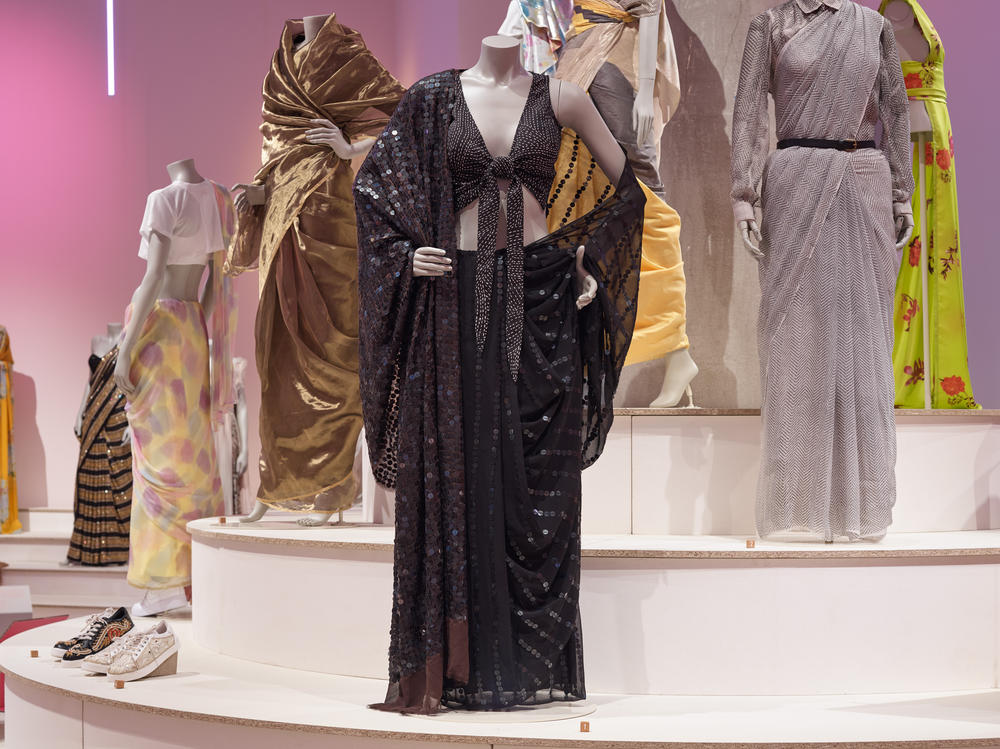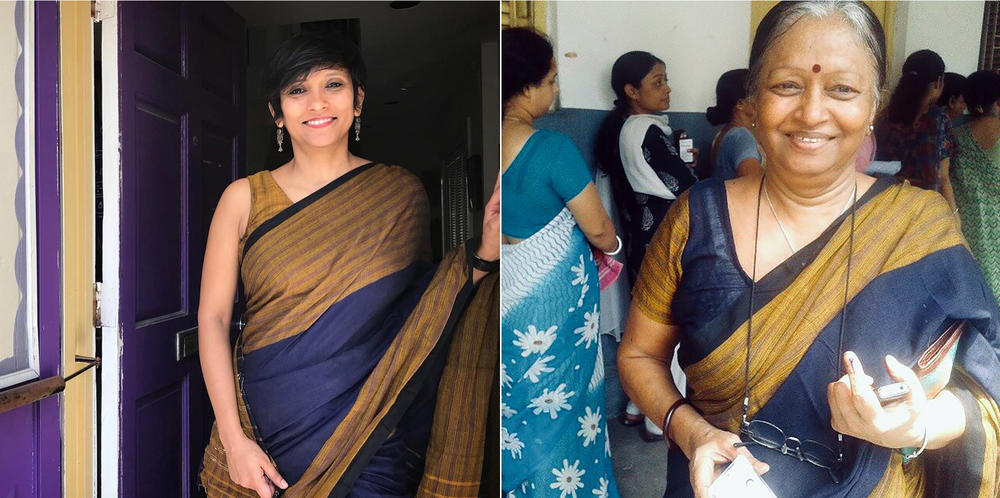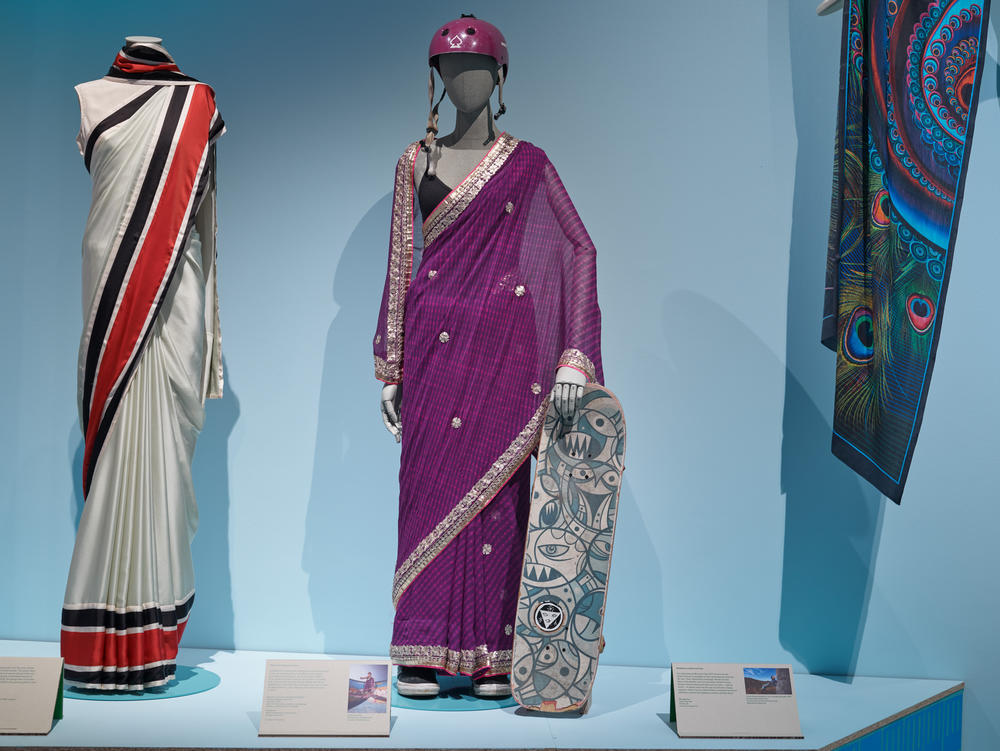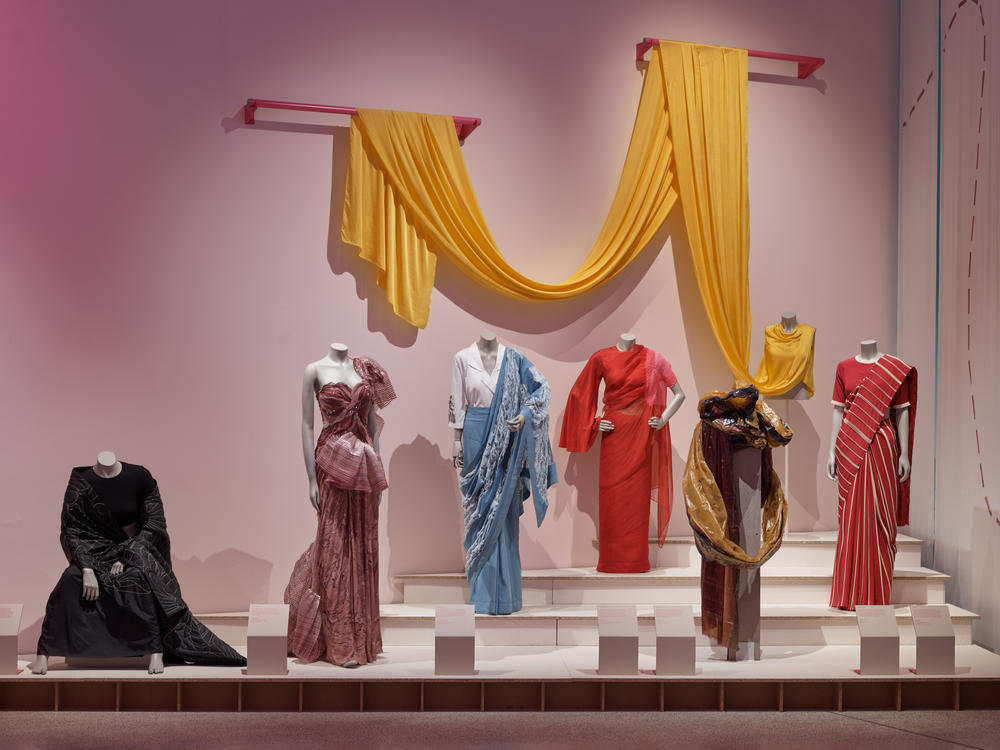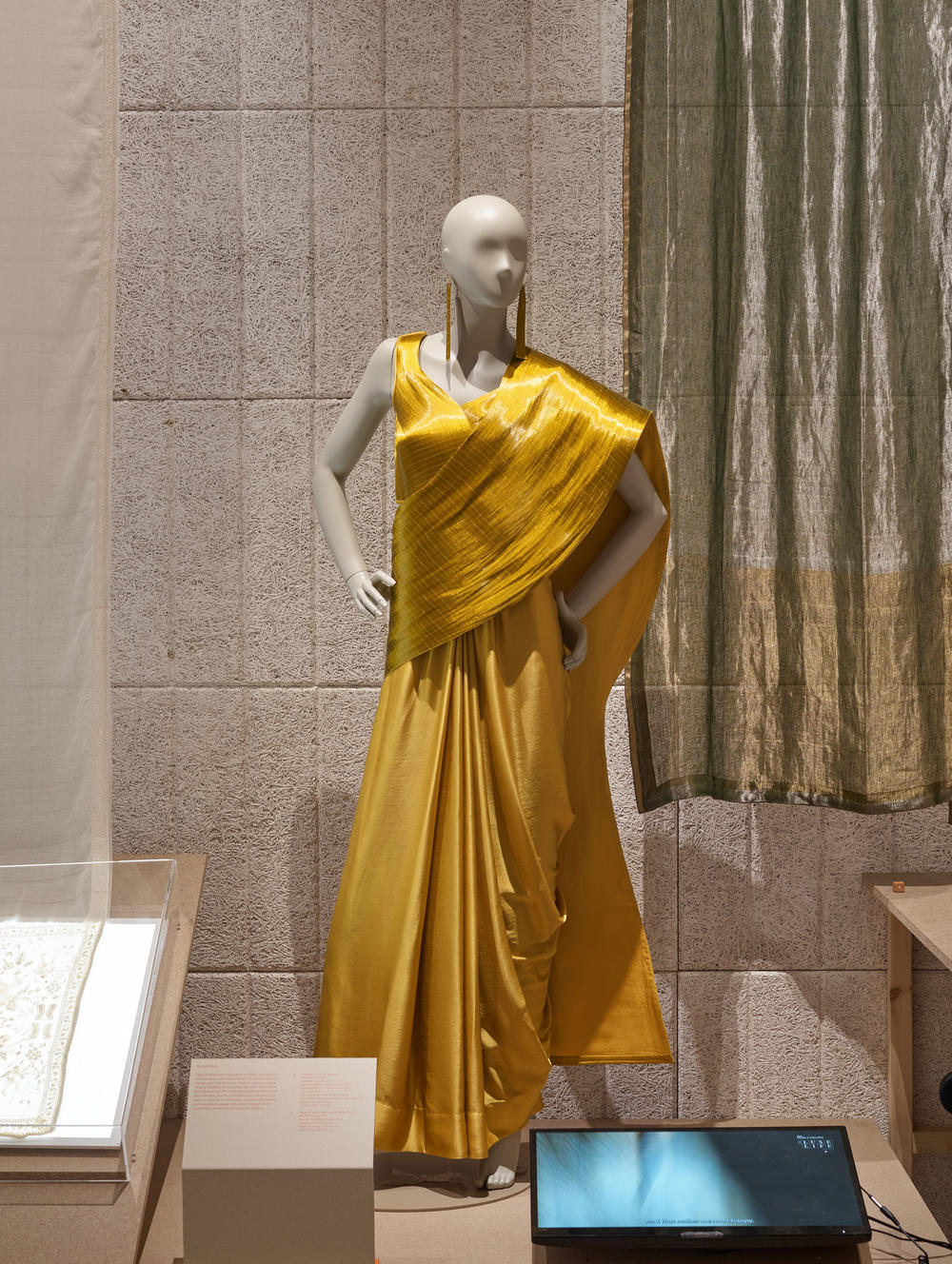Section Branding
Header Content
I love saris — but I have never seen saris like these before
Primary Content
I'm from India and I love saris. Millions of women across India and neighboring South Asian countries like Sri Lanka and Bangladesh still wear this ancient garment — typically a long strip of cotton, silk or synthetic fabric, several yards long and draped in myriad different ways across the wearer's body.
It's both an everyday garment and a fashion statement. But as many people from the subcontinent will admit, the sari also has deeper layers of meaning.
My first association with the sari was with my mother, my aunts and my grandmas, who wore saris every single day of their adult lives. To me, the sari is synonymous with their love, warmth and the safety of their embrace. Perhaps that's why saris are passed on to loved ones.
When my mother died, I inherited many of her saris. The rest I gave to my aunts, cousins and my mother's closest friends. So it's a garment that ties you to the most cherished women in your life.
That's why I made time on a trip to England to visit a new exhibit at the Design Museum in London that celebrates this ancient garment in contemporary forms that will dazzle and surprise. The show, which runs through September 17, is called "The Offbeat Sari."
"Offbeat" is an understatement. There's a bright purple sari worn by a skateboarder who calls herself Aunty Skates on Instagram.
There's a sari made entirely of recycled plastic. And there's even a foil jersey sari-gown worn by Lady Gaga.
"The Offbeat Sari' is really an urban story," explains curator Priya Khanchandani. "It's very much about urban youth and how women in that context are reclaiming the sari as an expression of who they are."
I couldn't agree more that a sari is the ultimate example of fashion as self-expression.
As a young adult, I only wore saris on special occasions. But the older I got, the more I wanted to wear them. I began to find them more flattering and less confining to the female form than the Western outfits I had been drawn to when I was younger. I also learned that I looked more feminine — and yet modern — when I wore a sari with my short pixie haircut. When I lived in New Delhi in my 30s, I wore saris even on workdays when broadcasting for public radio in the U.S.
Traveling around India in my 20s and 30s, I saw that saris didn't limit women in their mobility. In fact, women could do anything in a sari – get on and off trains and buses in busy Indian railways stations and streets, do yoga, work in paddy fields and ride bicycles carrying bundles of hay in the back, as many women in rural India do.
I also began to see how the garment is a reflection of India's and South Asia's tremendous diversity — of cultures, textiles and craftsmanship.
Every region has its specific drape, as illustrated by a series of short films called The Sari Series: An Anthology of Drapes, also featured in the Offbeat Sari exhibit.
And there are dozens of styles of weaves and craftsmanship specific to different regions. For example, my home state West Bengal is best known for beautiful and light hand-loomed cotton saris. There's the heavier, more ornate silk sari from the ancient city of Varanasi in northern India, called the Banarasi sari, that's so popular as a traditional bridal sari.
There's also the brightly colored Kanchipuram sari, from a city in the southern state of Tamil Nadu. They're made of pure silk and known for their contrasting borders.
I have such a vivid memory of buying my first sari when I was in my 20s. A family friend in my home state ran a boutique out of her home, selling saris designed and made by rural women nearby. I remember her bringing over a few saris, hoping my mom or I would buy one. I instantly fell in love with this light cotton sari that was white with a gray border. My mother thought it was too drab for someone so young, but I thought it was the most stylish and elegant sari I'd seen.
On the pallu — the loose end that drapes over the shoulder — there's a hand- painted village scene executed by the local women.
And so you see, every sari tells you about not just who's wearing it but who was involved in making it and which part of the country it was made.
As an immigrant trying to fit in here in the United States, I don't wear saris regularly. Besides, the hectic pace of life here doesn't leave time to drape a sari every day. It takes me at least 15 minutes (although my mom could drape hers in less than 5 minutes). But I still find every occasion I can to drape one on – so much so that my 3-year-old son has already come to love the garment and tells me that I look "beautiful" when I'm wearing one.
To this day, one of my favorite saris remains a dark blue cotton sari with an ochre yellow border. I bought the sari for my mother in Colombo, Sri Lanka, in 2012, when I was on a reporting trip. Wearing it now reminds me of my connection with my mother, the pride she felt in knowing that I had landed on my feet and that no matter where in the world I was, I was always thinking of her.
Copyright 2023 NPR. To see more, visit https://www.npr.org.

